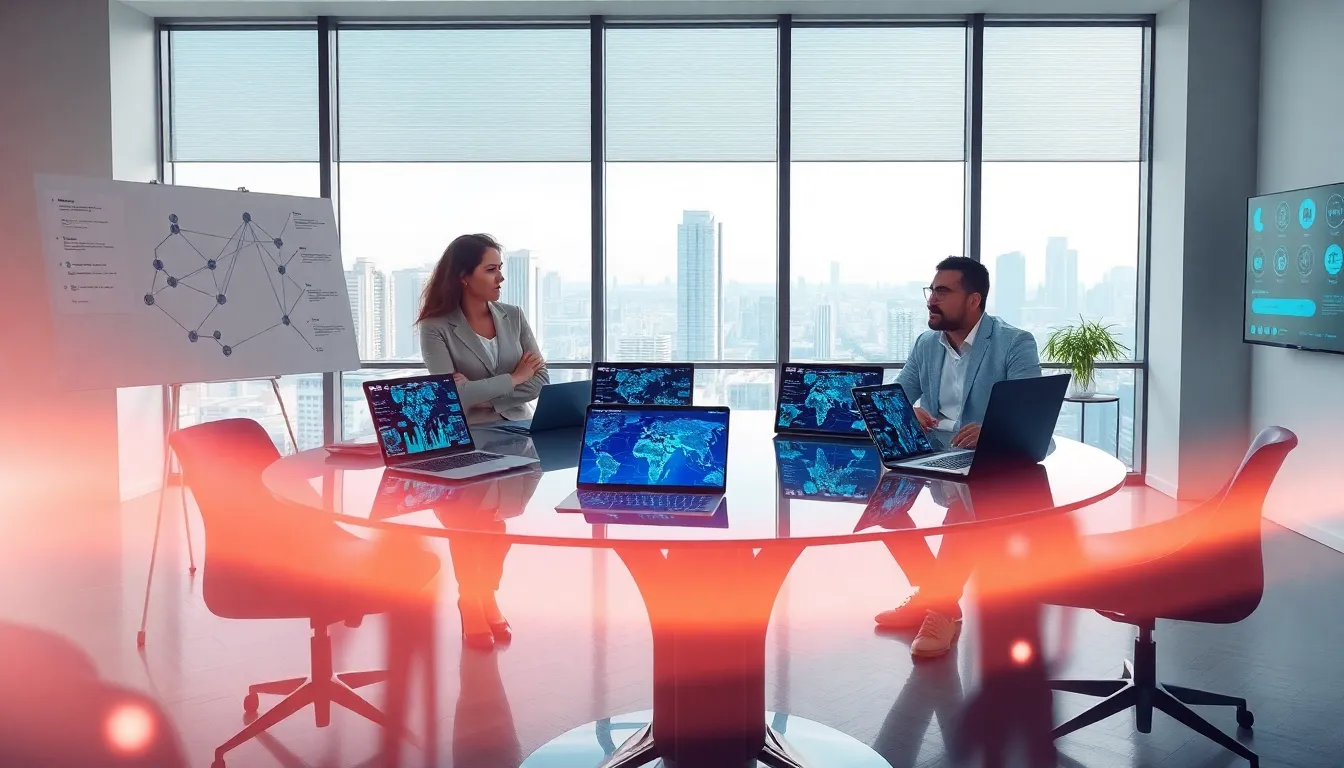Imagine your device is sending invitations to a party, except instead of friendly neighbors, it’s reaching out to computers, servers, and the occasionally mischievous bot wandering the internet. How does it find its way? The secret lies in something called an IP address. This guide is your golden ticket to understanding this enigmatic number, touching on everything from what they are to the occasional hiccup like the notorious “111.90.150.284.” Buckle up, because we’re diving deep into the digital world.
Table of Contents
ToggleWhat Is an IP Address?

An IP address, or Internet Protocol address, acts like a home address for devices connected to a network. Every device, whether it’s a smartphone, a laptop, or even a smart fridge, needs an IP address to communicate. With it, data knows where to travel. Think of it as your device’s unique identifier in the bustling neighborhood of the internet. You could have hundreds of devices in your home, but they all need a distinct IP address to function correctly.
An IP address consists of numbers and periods, such as “192.168.1.1.” But, understanding the basics is just the tip of the iceberg.
Types of IP Addresses
IP addresses generally fall into two categories: IPv4 and IPv6. The majority of devices today use IPv4, a numeric system comprised of four numbers separated by periods, ranging from 0 to 255.
IPv6, on the other hand, was introduced to accommodate the rapidly growing number of devices online, featuring a more complex structure that includes letters and numbers, so vastly increasing the address space.
Alongside these main types, there are also dynamic and static IP addresses. Dynamic IPs change each time a device reconnects to a network while static IPs remain constant. This differentiation is important for specific applications, especially for businesses needing stable, unchanging identifiers.
Exploring the Format of IP Addresses
IP addresses follow a particular syntax, which can help pinpoint their type. IPv4 addresses, for instance, can be broken down into four octets, denoting different segments of the network. Understanding its structure helps in diagnosis and troubleshooting.
Then, there’s the IPv6 format, which is a bit more complicated due to its alphanumeric nature. Comprising 128 bits, it breaks down into eight groups of hexadecimal numbers. Each group represents a block of contiguous bits in the address, making it easier for systems to route data.
These formats ensure that data can travel efficiently across the internet, allowing devices to communicate without a hitch.
Understanding IPv4 vs. IPv6
IPv4 and IPv6 have fundamental differences that cater to different networking needs. IPv4, even though its popularity, is gradually becoming insufficient due to the growing number of devices. It supports approximately 4.3 billion unique addresses, but this isn’t nearly enough for the increasing global population of devices.
IPv6 solves this issue admirably with its staggering address capacity, theoretically supporting over 340 undecillion unique devices. Isn’t that a magical number? This new protocol is designed to ensure that we won’t run out of addresses anytime soon, especially important as the Internet of Things continues to expand.
When considering the two, also factor in that IPv6 boasts improved efficiency and enhanced security features. As the internet evolves, understanding the relevance of these two protocols becomes crucial.
What Could Go Wrong with 111.90.150.284?
The IP address 111.90.150.284 is a fascinating example of how not all addresses are created equal. Though it looks valid at first glance, this address is actually invalid due to the number exceeding the permissible range of 0 to 255 for any octet in an IPv4 address. When a device tries to use this address, problems abound:
Common Issues Related to Invalid IP Addresses
- Connectivity Problems: Devices may struggle or fail to connect to networks, leading to frustrating moments when trying to browse online.
- Network Misidentification: An incorrect IP can cause your device to misidentify its network path, leading to data loss.
- Security Risks: Invalid or suspicious IP addresses can sometimes open the door to security vulnerabilities. It’s vital to double-check that the IP address utilized is legitimate.
Troubleshooting Tips for IP Issues
Everyone encounters issues with IP addresses from time to time. Here are a few handy troubleshooting tips to resolve common problems:
- Check Your Connection: Ensure that your device is properly connected to the network. Sometimes, a simple reconnection can fix the issue.
- Verify the IP Address: Make sure the IP address doesn’t exceed the range. Any number above 255 in any octet is a no-go.
- Use IP Lookup Tools: These handy tools can give insight into whether the IP address in question is valid and what it’s linked to.
- Restart Your Device: It seems simple, but restarting your device often resolves many minor issues.
- Consult Your Network Admin: If the issue persists, don’t hesitate to reach out to your network administrator for additional support.
Remember, understanding how IP addresses function is not just for tech-savvy individuals: it’s a vital skill for anyone navigating the digital landscape.



